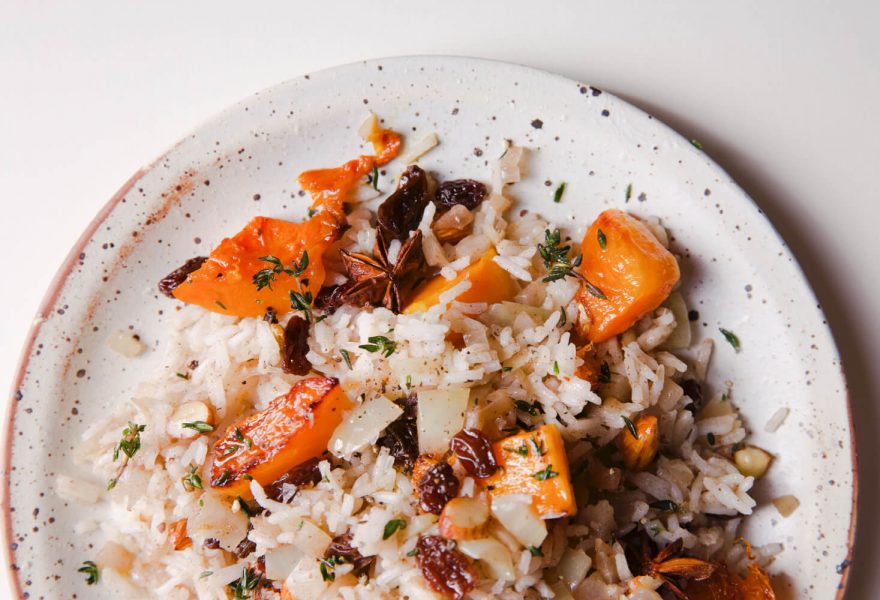Dried goods: what’s worth a place in your cupboard

As we find ourselves settling into spending more time inside our homes, many of us are enjoying home-cooked meals more than ever. While we are all trying to reduce the number of trips we are making to the shops, we know that having a well thought out store cupboard full of essential ingredients will hopefully make our dinner planning a little easier. In his second blog of the series, our UK chef ambassador David Colcombe shares which dried goods deserve a place in your cupboards, as well as some inspiration for how you can turn them into tasty meals.
Bulgur wheat
Bulgur wheat is one thing I often reach for when I’m making a healthy meal with little hassle. The vitamin-rich grains can be used in light salads, warming soups and nutritious stews. I recently created a maple and citrus bulgur wheat salad with baby carrots and fennel recipe that gives the taste of spring with only a handful of ingredients.
Batch cooking has seen a surge in appreciation over the past couple of months and cooking with bulgur wheat, grains and pulses is perfect for making extra portions to save for another day. My top tip for batch cooking grains is to undercook them by a few minutes, so that when you reheat your dish you can still enjoy the right texture.
Pasta
Pasta is the king of dried goods for many, mainly because it’s cost-effective, versatile and filling. Quick fix ingredients like pasta take the stress out of meal planning and by pairing it with whatever fresh ingredients you can get your hands on, you can easily rustle up a comforting crowd-pleaser for lunch or dinner. Switch up your pasta game and try out dishes like our chicken, bacon and pea penne with maple, it’s simple, delicious and packed with vegetables.
Oats
Keeping oats in the house is useful for lots of recipes too, whether you like yours blitzed into a breakfast smoothie, mixed into a fresh batch of cookie dough or whipped into easy overnight maple oats. One of my top tips for cooking with oats is using them to replace breadcrumbs if you’re adding a crust to fish or meat dishes, it gives a lovely nutty flavour!
Rice
Rice is another handy dried staple to keep in stock. It’s traditionally a side dish but can actually act as the main ingredient for a meal too. One of my favourite ways to cook with rice is to make this butternut squash and maple pilaf. It’s full of amazing spices and is perfect for making up a few extra portions and popping in the fridge for light lunches throughout the week. Don’t forget, if you are heating it back up you need to make sure the rice is piping hot. Rice is also useful for when you need to use up leftover meat and veg, simply stir-fry with a splash of oil and any sauces you have to hand.
Dried noodles
Normally used in oriental dishes, noodles are perfect for creating a quick and healthy stir-fry, soup or curry and they keep really well in the cupboard. They are also really filling and easy to prepare, ideal for a store cupboard supper without any fuss. If you are looking for some noodle inspiration, check out our beef and noodle stir-fry with maple Asian greens recipe which is a delicious way of mixing up your midweek meals.
In my final blog I’ll be looking at the common condiments and my tips and tricks for how you can use them in a way you might not have thought about before to elevate your meals. For now, I hope you have fun testing out new ways to make meals out of dried goods.
Remember, we love to see what you have been rustling up in the kitchen and you can share these with us on Facebook, Twitter or Instagram.
Happy cooking!
David
A natural source of energy
Maple syrup is a natural source of energy. Check out our recipes for food and drinks before, during, and after exercise.
)